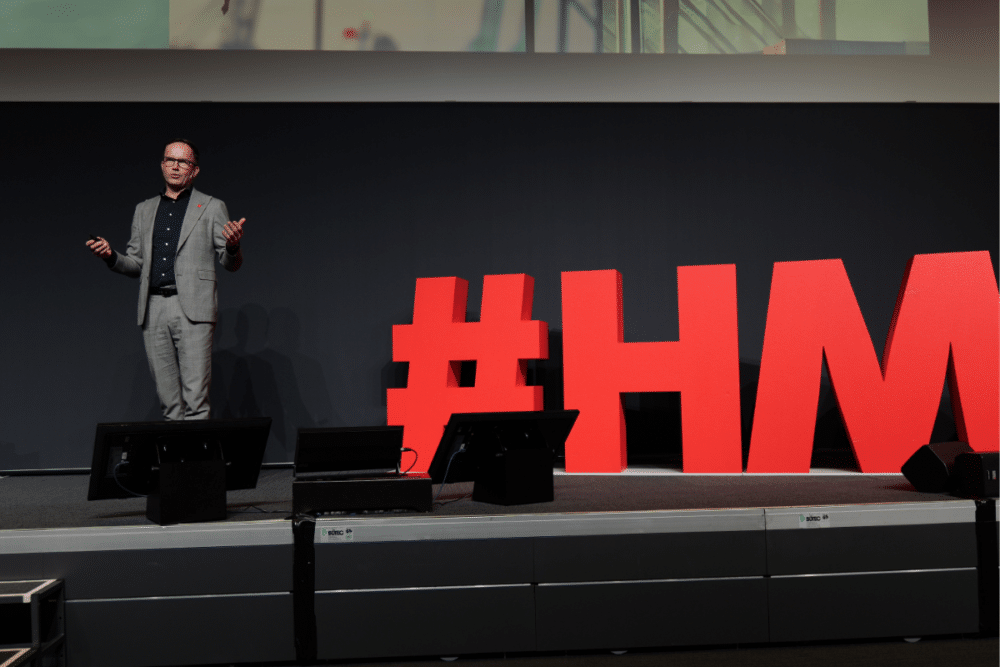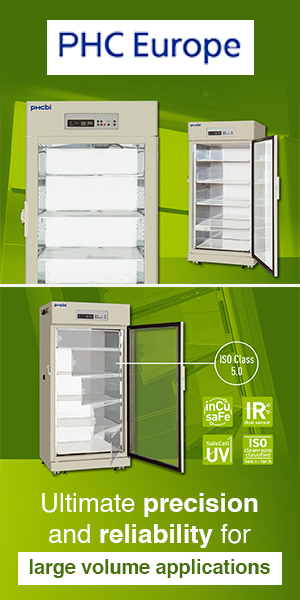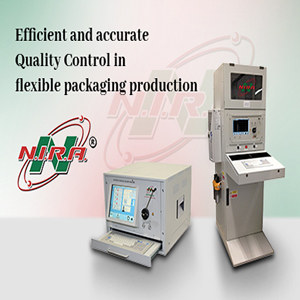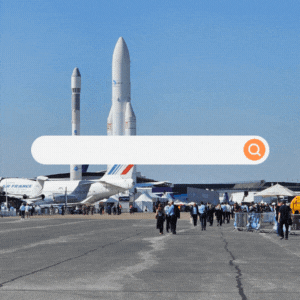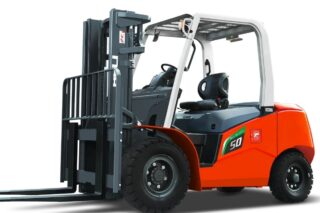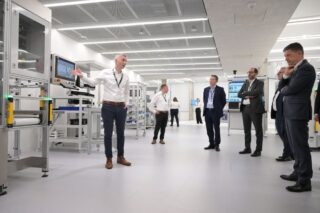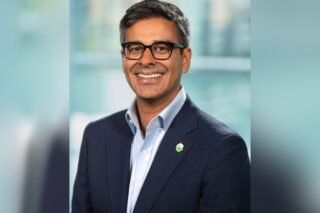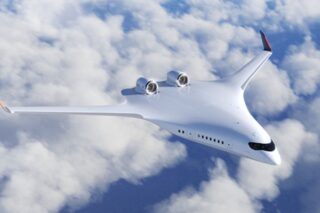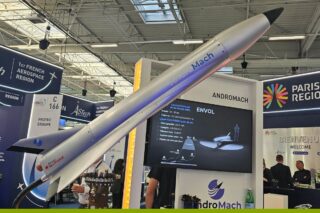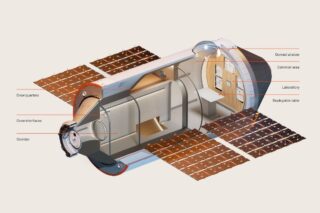On February 19, DirectIndustry joined 100 media outlets in Hannover for the Hannover Messe Press Preview, offering a sneak peek at the 2025 fair, set for March 31–April 4. Our reporter Stéphanie Maingard was on the ground for DirectIndustry. Here’s what she selected.
Organized by Deutsche Messe and held six weeks before the main show, the Hannover Messe Press Preview is an invitation-only event for journalists and select exhibitors. About 30 participants previewed product demos and new technologies, giving the press a first look at what’s ahead.
We heard from industry leaders, researchers, and Canada’s delegation as Canada is this year’s partner country. Among the topics that stood out, we noted: a bold focus on AI, a reinvigorated push for smart manufacturing, an insight into hydrogen, and a transatlantic handshake poised to reshape industrial innovation.
As always, Hannover Messe promises solutions: solutions to economic uncertainty, solutions to identified market problems, and solutions to the pressing need for sustainability.
Dr. Jochen Köckler, CEO of Deutsche Messe AG, set the tone:
“At the moment we are facing uncertainty, but uncertainty is turning into clarity.”
Everyone knows the challenges are real. Geopolitical tensions, commercial pressures, economic slowdown in Europe, especially in Germany, notably within the automotive sector, all set against a backdrop of political developments, including last week’s legislative elections and the future arrival of a new German Chancellor
Despite this current context, the organizers of the fair expect a strong political presence. For years, Hannover Messe has been a must-attend event for all German Chancellors. It has now become a tradition for the German Chancellor to open the trade show each year with a keynote address much like the Agricultural Fair is for French Presidents. The delegations from partner countries were also very significant. But this year, details regarding the participation of political figures, including Canadian Prime Minister Justin Trudeau, have not been publicly announced. Mr. Trudeau, it should be remembered, announced last January that he would soon resign from his position.
But Dr. Köckler wants to focus on the positive aspects:
“Hannover Messe is arriving at exactly the right point in time because firstly, there’s a huge demand in Germany and Europe to use technologies, to implement technologies that provide us with a solution to competitiveness. On the other hand, we also need to realize which technological opportunities are available, and to make sure we can engage in dialogue with politicians, so that we can look ahead with confidence. From a European perspective, speaking about the clarity that I mentioned before, we’ve got a great opportunity in six weeks’ time to use the Hannover Messe to ensure that politics, the economy, industry can show a level of optimism and be bold going forward.”
So, what can we expect from Hannover Messe 2025? Below, we unpack the key takeaways from the press preview.
Steering Through Uncertainty: A World in Flux
The Press Preview kicked off with a sobering look at the global landscape. Dr. Köckler painted a picture of uneven economic growth, China slowing to 3-5%, the U.S. buoyed by the Inflation Reduction Act at 2-3%, and Europe limping along at 0.4%, with Germany facing particular headwinds. He highlighted that, for some exhibitors,
“order books are not as full as we wish they were”.
Geopolitical tensions loomed large. Dr. Köckler referenced the Munich Security Conference, where the U.S. signaled a shift in priorities, and negotiations in Riyadh hinted at thawing U.S.-Russia relations. Meanwhile, China’s subsidy-driven economy and the specter of U.S. tariffs add complexity to global trade. He further noted the European meeting on Monday, February 17, which included French President Emmanuel Macron and German Chancellor Olaf Scholz, stating,
“It will be interesting to see when we look into the future whether the situation will be one in which we move together and focus on the economic significance of the block, and what better place in six weeks to meet than at the Hannover Messe, and ensure that we have uncertainty turn it into clarity.”
Yet amidst this turbulence, Dr. Köckler sees Hannover Messe as a beacon:
“We’re looking ahead to two different things. We’re looking to solutions and competitiveness. And you also need a stable political framework. All of these three factors play a role in the Hannover Messe and are part of its breadth.”
He hopes the event will catalyze optimism and decisive action.
Canada: Much more Than Moose and Mountains
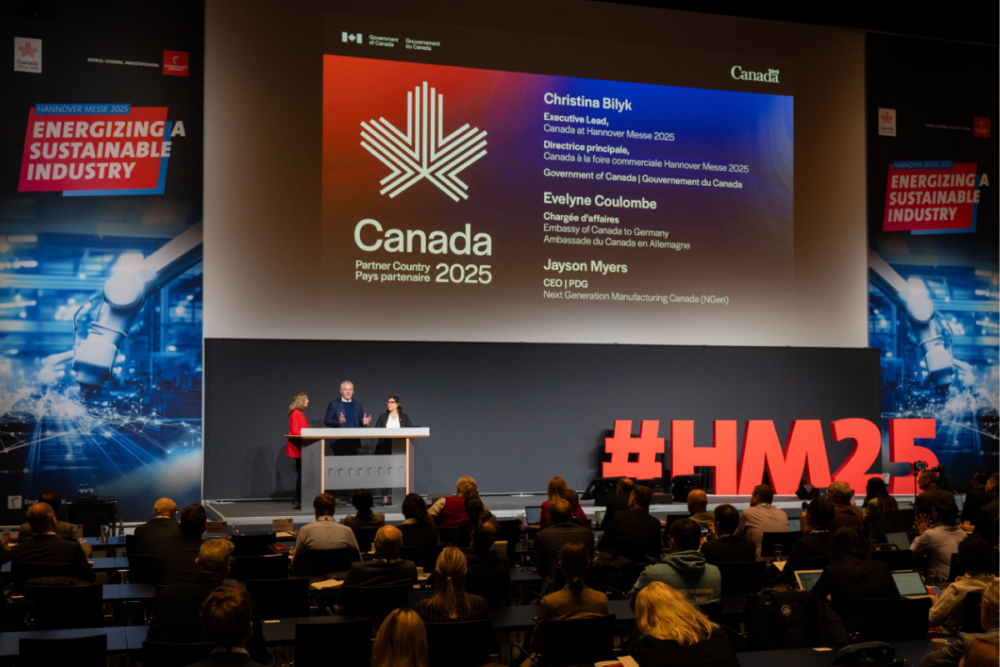
This year’s partner country, Canada, stole the spotlight with a delegation that radiated ambition. Evelyne Coulombe, from the Embassy of Canada to Germany, framed Hannover Messe 2025 as
“the most important event in our economic area of bilateral relationship with Germany.”
Initiated by Chancellor Scholz’s invitation, securing Canada as Hannover Fair 2025’s partner country took two and a half years.
“Our presence at the fair is really meant to show businesses, organizations, governments that Canada is a reliable partner in these changing times,” Coulombe said, emphasizing green, digital, and resilient solutions.
Jayson Myers, CEO of Next Generation Manufacturing Canada, brought the numbers. 225 Canadian exhibitors are expected at the coming fair. 1,000 Canadians are descending on Hannover. The goal is to surpass last year’s $70 million in generated business.
“Canada is more than moose, and mountains,” he quipped. “We are also a hub of a very vibrant advanced manufacturing sector and technologies such as artificial intelligence, quantum, advanced materials, robotics automation, alternative energy solutions that are really revolutionizing the business of manufacturing.”
Mr. Myers highlighted Canada’s Pavilion as a key attraction. In Hall 2, the National Innovation Ecosystem will showcase quantum computing and advanced materials. Hall 7 will feature a Robotics hub, including a robotic hockey goalie contest. Hall 13 will focus on Alternative Energy, spotlighting biomaterials, hydrogen, and more.
Christina Bilyk, from Innovation, Science and Economic Development Canada, added context:
“We’ve seen since the signature of the Canada-EU Free Trade Agreement, CETA, an increase of 44% in bilateral trade”.
Top Canadian exports—machinery, motor vehicles and parts, electrical equipment, and precision and technical instruments—align perfectly with Hannover Messe’s themes. German giants like Bosch and Bayer Science and Agriculture are investing in Canada. Canadian firms like BlackBerry and Hatch deepen ties in Germany.
“We’re absolutely putting our foot on the gas,” Bilyk added.
A playful video capped their pitch, touting Canada’s hydrogen production, lithium battery chain, and, yes, denim tuxedos.
AI in Industry: The Engine of Tomorrow

If Canada brought the charm, AI brought the firepower. Two heavyweights, Fatma Kocer, Vice President, Engineering Science Data, at Altair Engineering and Professor Sepp Hochreiter, Founder of NXAI, lit up the stage with visions of AI’s industrial future. Kocer showcased how AI slashes product development timelines.
“Almost everything you touch is engineered,” she said.
From bulky antennas to sleek designs, engineers make critical decisions daily, now supercharged by AI.
At Altair, simulation once took hours or days; AI cuts it to seconds. Take airbags at Continental. With Altair’s computational expertise, optimizing size, material, and deployment rate can drop from hours to 30 seconds. Or CNH’s plows: assessing driver comfort across speeds and depths went from days to three seconds.
“We take data to train machine learning models to implement this AI solution so that the machine learning models are instantaneous predictors,” she explained.
For his part, Prof. Hochreiter, introduced xLSTM, a leaner, faster alternative to the bulky transformer models powering ChatGPT. Onuora Ogbukagu, Spokesman for Deutsche Messe AG, highlighted Prof. Hochreiter’s foundational role in AI, saying,
”he’s widely recognized as the father of the so-called long short-term memory networks. So we have the guy here today with us. If he wouldn’t be here, we wouldn’t have anything like Siri.”
Prof. Hochreiter’s legacy in enabling technologies like Siri underscores the significance of his latest push toward more efficient AI systems.
“I see modern AI in three phases. Basic development, scaling up, and industrialization. We are on the edge of industrialization of AI,” he stressed out. “You all know ChatGPT. ChatGPT was one of the GPT series, it’s from Open AI. GPT stands for Generative Pre-Trained Transformer. It’s a transformer technology and it became larger and larger. It started with 1.3 billion data tokens and a model size of 417 million parameters. And it grew to 10 billion tokens, 1.5 billion parameters. And then it went to hundreds of billions of parameters and more data. Meaning you used more data, you used larger models. And this became ridiculous. These models have trillions of parameters and you need more and more data. But we ran out of the data. We have used all the data, which is on the internet, all data on text. This will have an end.”
As he warned that scaling up was hitting a wall, he underlined the importance of industrial AI solutions. His xLSTM, developed at NXAI in Linz, Austria,
“is super fast, has a small memory footprint, is energy efficient, and requires less computing.”
It proves perfect for robotics and self-driving. Comparing it to transformers, he offered a vivid analogy explaining a transformer rereads the whole book for every word while xLSTM remembers what it’s read and moves on.
Festo and SpringLab already use xLSTM for drones and autonomous systems. Prof. Hochreiter proudly emphasized that with xLSTM, Europe has a solution that neither the U.S. nor China possesses. OpenAI’s founders built on LSTM, so that Europe is now leapfrogging them.
READ ALSO
Smart Production and Hydrogen: The Supporting Cast
AI wasn’t the only star. Dr. Köckler also highlighted hydrogen and smart manufacturing as key drivers.
Hydrogen, with 500 exhibitors dedicated to this topic, remains a cornerstone of sustainable industrial production. On sunny, windy days, we produce excess energy, and hydrogen can definitely offer a solution for efficient storage. In addition, green steel projects are moving, backed by political funding. Canada’s expertise in alternative energy, from geothermal to hydrogen, will amplify this focus. With hydrogen, we have a basis for electrification, so we are on the way to an electrified economy thanks to storage.
In Hall 6, an Application Park will showcase automated battery cell production and robotics—think barrier-free, human-robot collaboration.
The Robotics Award Revival and Top Winner
And speaking of robots, the Robotics Award, revived after a six-year hiatus since 2019, lit up the stage with groundbreaking advancements in robot-assisted automation and logistics. Professor Annika Raatz, from Leibniz University Hannover’s Institute of Assembly Technology and representing the five-member jury, introduced three nominees judged on technical innovation, usage, economic viability, and industry utility. She emphasized the difficulty of selecting winners from a pool of exceptional, market-ready solutions.
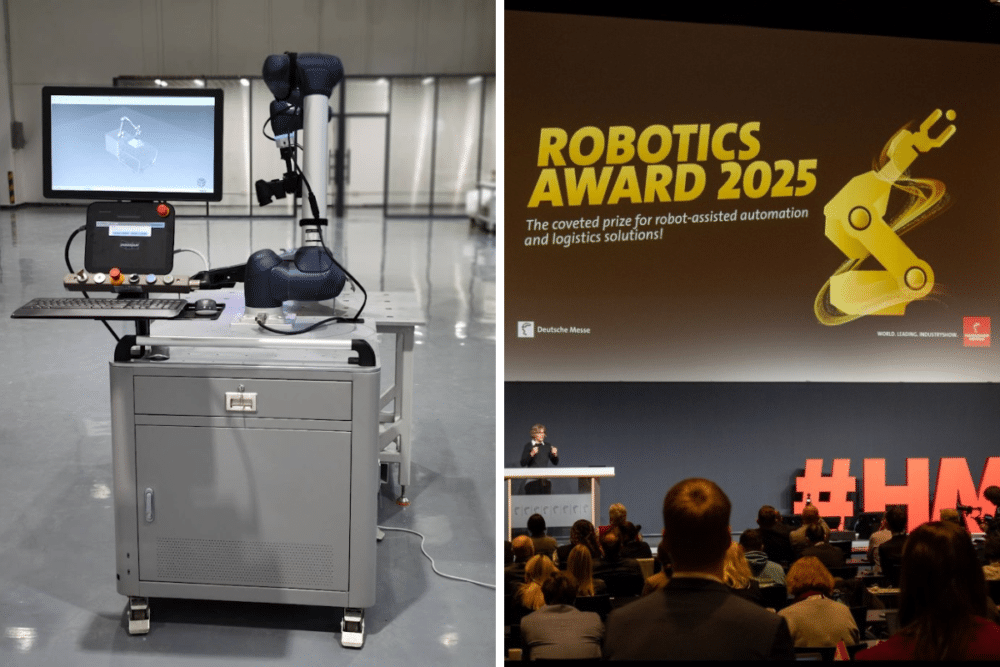
1/ MARI
First place went to Canada’s Maple Advanced Robotics Inc. (MARI) for their Autonomous Adaptable Robot System (AARS). Excelling across industries, from aviation to space and travel, the system empowers robots to autonomously handle tasks like polishing, spraying, inspection, and sorting, without the need for programming. The judges praised how it slashes task implementation time and costs, making automation accessible to smaller businesses that couldn’t dream of it before. With Canada already set as the partner country for the upcoming fair, this win felt like a double stamp of its pioneering spirit.
2/ Leverage Robotics GmbH
The competition was tight, though, and the second- and third-place winners brought their own firepower. Leverage Robotics GmbH out of Munich secured silver with their RoboHive platform, developed as part of their Intelligent Microfactories project. The system enables multi-robot-programming using the combination of an AI-driven user interface in natural language and a time-based visual drag-and-drop workflow.
3/ Mantis Robotics BV
Mantis Robotics BV, from Belgium, took third place with their Mantis Robot, the world’s first high-speed industrial robot with intrinsic 3D spatial perception. With physical and artificial intelligence at its core, it can interact safely and seamlessly alongside humans, and combines the advantages of fixed robot arms and collaborative robots. Mantis Robot enables barrier-free automation at a fraction of the cost of competitors and turns out much more productive than cobots. Prof. Raatz pointed out that if the robot performs as expected,
“manufacturing and automation will make a quantum leap forward.”
This year, Hannover Messe will host 4,000 exhibitors incuding tech giants like AWS, Google, Dell, Schneider Electric, Siemens; mid-sized innovators like Festo and Rittal; 300 startups; and research hubs as the German Fraunhofer Institute and Karlsruhe Institute of Technology (KIT).
Find our coverage of the Hannover Messe trade show on DirectIndustry and on our social media.
